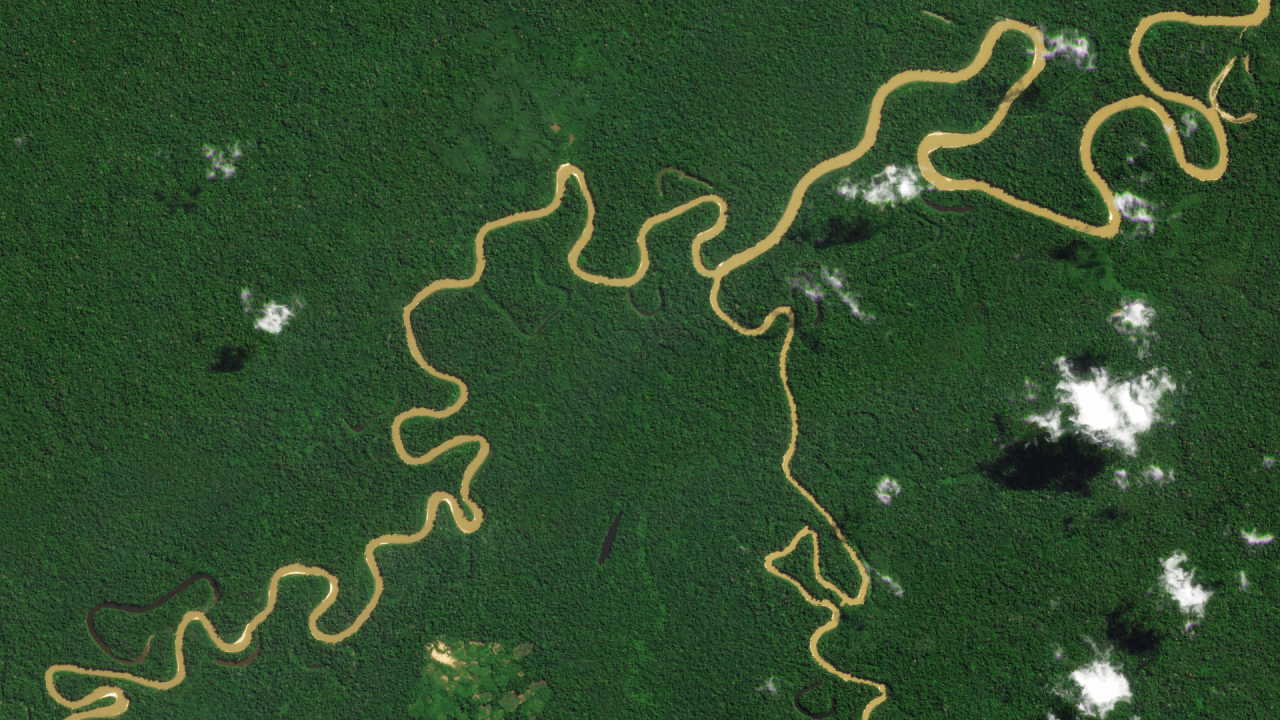30 April 2025
🦉 Amazon Conservation and Planet shared a report today analyzing forest carbon stocks in Indigenous and protected areas in the Amazon..
Carbon in the Amazon: Protected Areas & Indigenous Territories
🌳 Key Takeaways Protected areas and Indigenous territories cover nearly half (49.5%) of the Amazon biome, but contain 60% of the aboveground carbon. They gained about 257 million metric tons since 2013, serving as a key carbon sink. Areas outside of protection and Indigenous stewardship lost 255 million metric tons since 2013, functioning as an overall carbon source.

A river at the edge of the Vale do Javari Indigenous Territory, Amazonas Brazil. © 2025 Planet Labs PBC
This data provides critical insights into two interwoven stories: how the movement for recognizing Indigenous rights and environmental stewardship has shaped—and continues to shape—the Amazon’s biophysical capacity to respond to climate change.
The data is clear across many studies, and is reinforced here: protection and Indigenous stewardship in the Amazon maintains abundant carbon stocks in forests that draw down more and more carbon over time. While protected areas and Indigenous territories comprise just under half the total area of the Amazon, they store about 60% of the total carbon. The source/sink dynamics are even starker. While areas outside of protected areas lost nearly 255 million tons of carbon over the 10 year period of analysis, lands inside protected areas and Indigenous territories gained nearly 257 million metric tons.
The key implication is that increasing the amount of land under Indigenous stewardship and other forms of protection will be critical strategies for maintaining climate resilience in the world’s largest forested biome. The data helps tell that story, providing evidence-based reporting on how the Amazon is shifting and changing with us every year.
The global carbon cycle is driven by complex interactions between ecosystems and the atmosphere. This might seem big and abstract, but humans play a central role in how that system works. Our data shows that land stewardship and protection fundamentally shift the carbon storage and emissions dynamics in the Amazon.
Protected areas and Indigenous territories maintain resilient, carbon-dense forests that draw down more carbon over time. The barriers between protected and unprotected areas can be viewed as a natural experiment, previewing two climate futures: one under land stewardship that promotes climate resilience, versus one that doesn’t. The data clearly shows this distinction, and does so using empirical, independent measurements from space.
Satellite data are critical for providing a shared, top-down understanding of our rapidly changing world. As governments, markets, NGOs, and citizens invest in natural climate solutions — like expanding Indigenous stewardship, avoiding reforestation, making payments for ecosystem services, and planting trees — we need empirical data to assess progress towards our shared goals.
Satellites make this easier by providing repeat, independent, well-calibrated global measurements of the world’s forests. Analyzing this data can identify what’s working, what challenges we still face, and inform how to adjust conservation strategies accordingly. The partnership with Amazon Conservation is a great model for how to do this. They show how a skilled conservation team can rapidly reveal insights into policy-relevant environmental change and identify high leverage conservation opportunities.
A big thanks to the team that brought this together, including Nadia Leslye Mamani Chavez, Matt Finer, Blaise Bodin, Sidney Novoa, Amy Rosenthal and Flávia de Souza Mendes.
Crossposted via LinkedIn